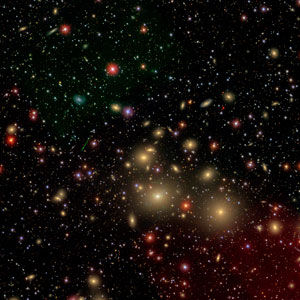
Contact Details:
EngNet - Engineering Network
11121 Carmel Commons Blvd.
Charlotte
NC
28226
United States of America
Tel: +01 704 5413311
Fax: +01 704 9430560
Send Enquiry | Company Information

Found: A Supermassive Black Hole That Dominates Its Galaxy
Company News Wednesday, November 28, 2012: EngNet - Engineering Network
Supermassive black holes at the center of most massive galaxies are, you guessed it, pretty massive. They usually make up about 0.1 percent of the total mass of the central group of stars in their galaxy. But when astronomers looked inside one otherwise unremarkable small galaxy, they found something a lot bigger.
Scientists at the Max Planck Astronomy Institute in Heidelberg, Germany were looking at galaxy NGC 1277, part of the Perseus galaxy cluster 200 million light-years from Earth, when they saw the monster. That galaxy's enormous black hole makes up 59 percent of its bulge mass, which is the mass of the the tightly packed group of stars forming the bright galactic center. from which spiral arms branch out. It blows away the previous record of 11 percent, according to a letter released today in Nature.
Co-author Remco van den Bosch developed a system using what are called Schwarzschild models to determine the mass of the black hole. First, he constructed a mock galaxy by assuming the mass and distribution of stars and dark matter. Then he and his team computed all possible orbits for the stars in that galaxy. The researchers could measure the average velocity of the stars, so they rearranged the orbits in their model until it looked like what they could see in real life. "After trying about 600,000 different mock galaxies, we had sufficiently sought through all possibilities and found that this galaxy had to have a black hole of 17 billion solar masses," van den Bosch tells PM.
Astronomers believe that black holes make the stars in the galaxies around them, so when the black hole grows, it makes more stars, and the size ratio stays pretty much constant. But in the case of NGC 1277 and five similar galaxies around it, the black holes grew bigger and bigger without making more stars. "We didn't expect these systems to exist at all," van den Bosch says.
"[This is] evidence that the relationship between supermassive black holes and their host galaxies may be significantly more complex than thought," says Caleb Scharf, director of astrobiology at Columbia University and author of the book Gravity's Engines. (Scharf wasn't involved in the research.)
This result might force astronomers to change how they measure distant black holes; using the mass of surrounding stars to estimate their mass might not be good enough, which is exciting for Scharf—it means galaxies and black holes may not evolve in the way people thought. "Here's a very dense-looking galaxy that's otherwise finished making stars 8 billion years ago, and an incredible 14 percent of the total stellar mass of this galaxy is locked up in a black hole," Scharf says. "That's not just an outlier; that's almost off the scale!"
Our Milky Way galaxy and NGC 1277 have roughly the same mass and the same number of stars, but that galaxy is much more compact and dense than ours. Our galaxy's central black hole is about 4 million times the mass of our sun, which is in the normal range for most galaxies. NGC 1277 has a black hole that's 17 billion solar masses—more than 4000 times more massive than the Milky Way's.
"So now that we have found that these crazy kind of galaxies exist, we want to know how they form and how uncommon they are," van den Bosch says. "The question now is, why is our galaxy big and fluffy with a normal black hole ,and why is NGC1277 so much denser with a big black hole?"
According to van den Bosch and his co-authors, NGC 1277 resembles a class of highly compact, rotating, and massive "red, passive galaxies" that existed as far back as 10 billion years ago, with stars packed together a hundred times more densely than anything we see today.
"One of the ideas for how such galaxies could have existed is that they grew extremely rapidly in the first billion years after the big bang, as fast-rotating disks of gas and matter formed stars in a very small volume, while also feeding supermassive black holes at their centers," Scharf said. "Going out on a bit of a limb, the galaxy NGC 1277 might possibly represent a relatively undisturbed descendant of one of these extremely early, extremely dense and efficiently formed objects, complete with a crazily big black hole."
Source: http://www.popularmechanics.com/science/space/deep/found-a-supermassive-black-hole-that-dominates-its-galaxy-14793081?click=pm_news
